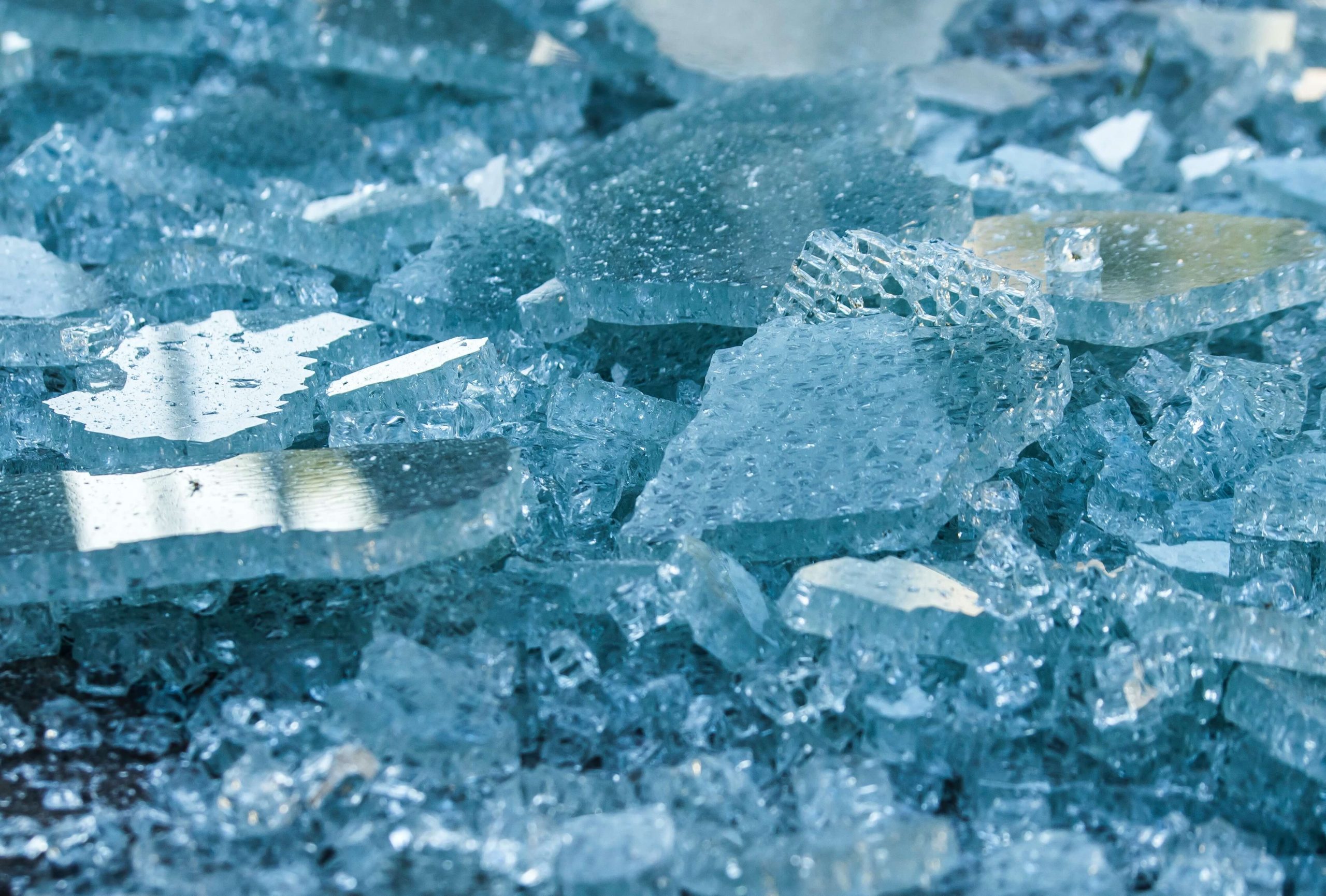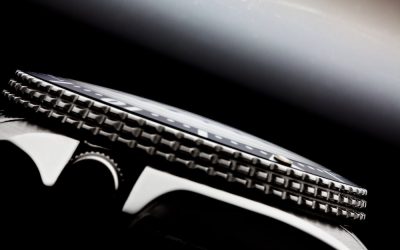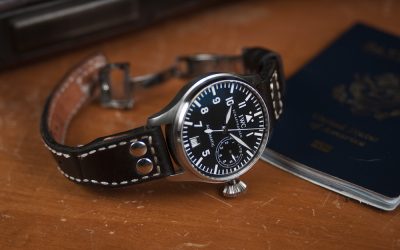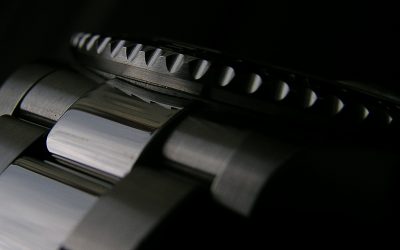Does mineral glass scratch easily?
Explore the different types of glass used on a luxury watch and discover the benefits of each

Mineral glass is made from silica and manufactured using regular tampered glass. One of the reasons why mineral glasses are used in watches is that they’re tempered (heated at high temperatures), which increases their scratch resistance. While it’s bound to hold a few scratches in its lifetime, you can easily remove them with basic polishing and buffing. Keep in mind that this type of watch crystal is commonly used in divers’ watches and military field timepieces.
Pros
- Better Scratch Resistance
Compared to other watch glass such as acrylic crystals, mineral glass has better scratch resistance. This is because they are exposed to high heat during the manufacturing process. - Anti-Reflective Coating
Some timepieces with mineral glass feature a coating that makes them anti-reflective (also known as anti-glare or AR). The anti-reflective coating is vital in ensuring exceptional readability whenever there are poor lighting conditions. The finish even gives the watches with this glass a more polished look (appears expensive).
Cons
- Difficult to Remove Scratches
Over the years, your watch mineral crystal is bound to get scratches, and when they do, it can be challenging to remove. Sometimes, you may be forced to live with the scratches.
Popular alternatives
If you do not find mineral crystals a worthwhile investment, there are other watch crystals that you may find useful. Here is a brief outline of a few you should know.
Sapphire Crystal
The Sapphire crystal is not entirely glass, but a synthetic product designed from high-purity synthetic aluminum oxide through a complex process referred to as Verneuil. These glasses are hardened to about 2,000 HV, which is almost two times that of mineral glass. This means that the glass can be scratched by a few materials such as real diamond which is between 4,500 to 10,000 HV. This is the reason why sapphire glass used for the most expensive watches.
Pros
-
Easily Recognizable
It is a lot easier to tell whether your watch features sapphire glass by using the water drop method. All you’ve got to do is drop the water on the surface of a watch glass and observe its behaviour. If your drop remains spherical, that’s spherical glass. -
Unchallenged Durability
Sapphire crystals have better resistance to scratches than any other watch glass. You should know that rank at 9 out of 10 on the Mohs hardness scale. This is why this cyrstal is usually seen on the most prestigious timepieces -
High Quality
Sapphire crystals have been specially made to withstand high pressures a wristwatch may be familiar with. For this reason the process the Sapphire Crystal goes through is much more demanding leading to a higher production cost, which has earned it’s reputation as the highest quality crystal for a wristwatch to possess.
Cons
- Reduction in Readability
One of the major setbacks of sapphire glasses is that they’ve got strong refraction of light, which leads to reflections that can potentially limit the readability of the watch. It’s only the high-quality watches with sapphire glass that feature Circula (an anti-reflective coat). - More Expensive
Due to the way this synthetic crystal is created it increases the value of the material, making it a common watch face to appear on some of the most expensive timepieces.
Acrylic Glass
Also referred to as Perspex or Plexiglass, Acrylic glass is usually associated with lower-end or vintage diving watches. This is mainly because of the availability and affordability of the glass and the suitability that other glass options offer.
Some of the best diving watches in history used acrylic crystal, as an alternative to other glass materials due to the glass’s ability to withstand high pressures. Also, these watches are not easily shattered and have better resistance against scratches. In case your timepiece gets scratched, the acrylic crystal can easily be polished.
The most popular watch recognised for using and developing perspex glass in 1936 is the Panerai Luminor, which features a domed 4mm thick face to maintain the watches integrity under the harshest of oceans.
Other watch brands, such as Omega and Rolex watches, also were known to include this type of watch face in some of their oldest collections. Although in this century watches which use acrylic glass are usually lower-level designer watches, as a way to save money on production.
Pros
- Cheaper material
Unlike other types of glasses, acrylic crystals are easy to repair when they get scratched. This is the type of glass found in many watches, and due to their availability, it’s a lot easier to obtain a replacement. - Lightweight & Pressure Resistant
If you are in search of watches that feels light on the wrist, you should consider models with acrylic glass. Its lightweight design is also the reason why this glass is popularly used in children’s watches.
Cons
-
Prone to Scratch
This type of watch glass is usually not common on more luxurious watches due to their low resistance to scratches and extreme pressures. Once they get scratched, it can prove challenging to buff out. This results in the watch’s lifespan being a lot less than watches with sapphire crystal. -
Low Quality
When a watch uses an acrylic material for its glass, it is usually associated with the watch being a lower grade of quality. This is because other materials such as mineral glass or sapphire crystal have a higher production cost.
What is the best glass to have on a watch?
The material used for the watch glass is an essential consideration when it comes to selecting your wristwatch – to ensure your watch is reliable and resistant to your lifestyle.
If you have no idea about the types of watch glass, you can get confused when it comes to choosing a timepiece and identifying a highly dependable watch compared to one that will fail to meet your standards. The information provided in this watch crystal guide should help you make an informed decision the next time you are planning to invest in a watch brand with high-quality glass.
When it comes to watch crystals, Sapphire crystals come at the top of the list as it is praised highly due to their scratch-resistant properties. While sapphire crystal will be the most popular glass to see on a watch, Acrylic glass and mineral glass both have their own advantages and disadvantages. – such as their recognition for being lightweight and shatterproof.
If you want your watch glass to be protected from scratches, you should ensure that you take great care of your timepiece, such as wrapping it with a cloth when you’re not using it. It’s also crucial that you avoid direct contact with other jewellery or glass surfaces.




